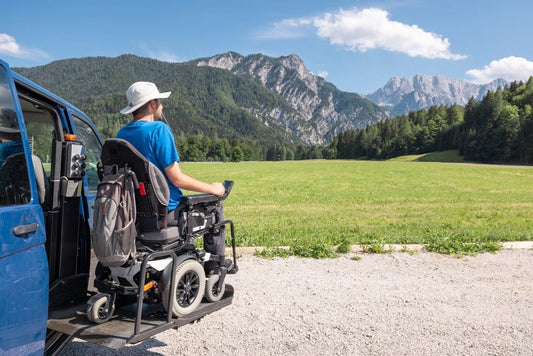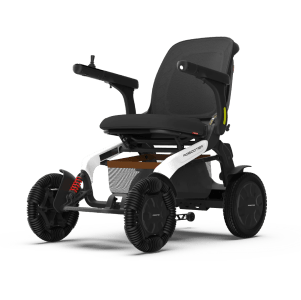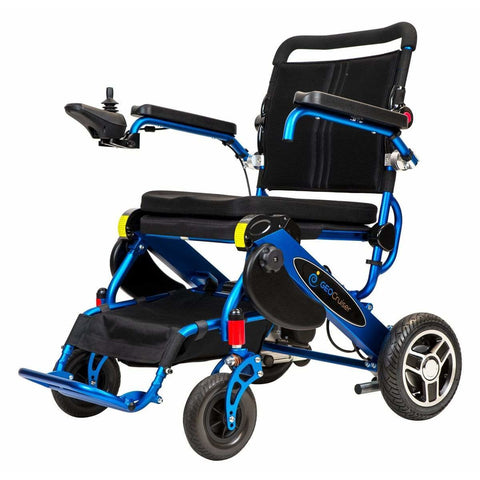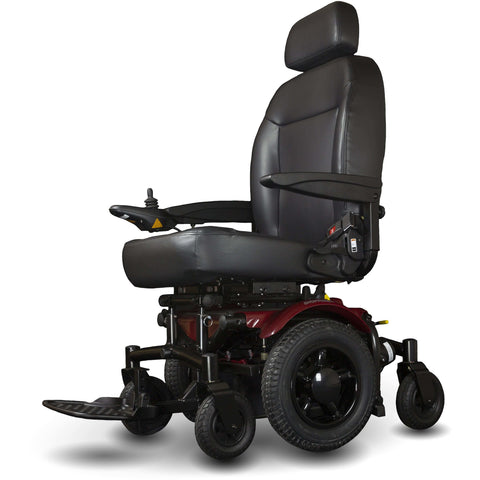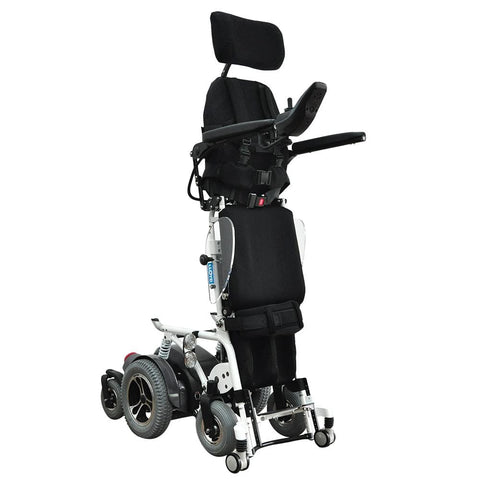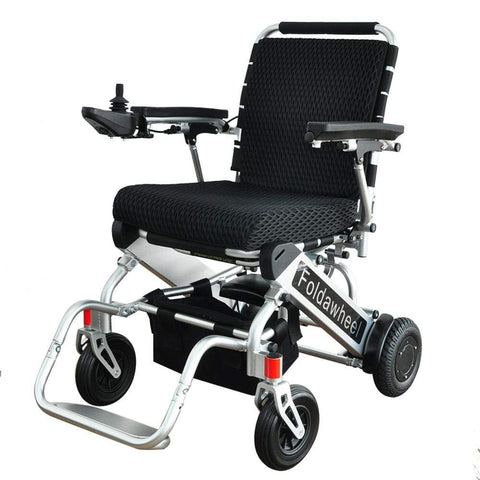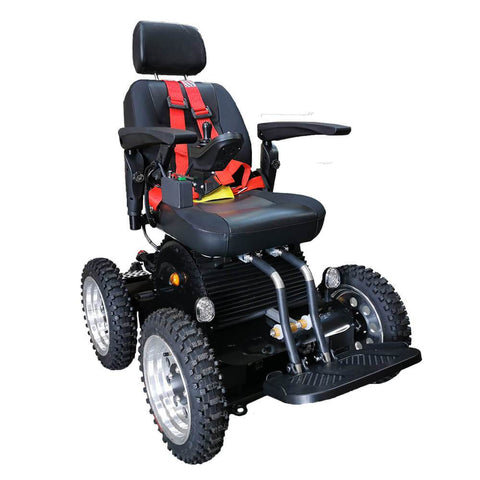If you or a loved one requires a power wheelchair, the cost can be a significant concern. Fortunately, Medicare and many private insurance providers can help cover the expense if you meet specific eligibility requirements. In this guide, we will walk you through the process of obtaining a power wheelchair from mPOWERchairs.com using Medicare or your insurance provider, including how to navigate the system, the necessary documentation, and a breakdown of HCPCS codes for different wheelchair types.
By the end of this guide, you'll have a clear understanding of how to get the power wheelchair you need while ensuring you're eligible for reimbursement.

Step 1: Determine Your Eligibility for a Power Wheelchair
Medicare Coverage for Power Wheelchairs
Medicare covers power wheelchairs under Medicare Part B as durable medical equipment (DME). However, you must meet certain criteria for the equipment to be covered. Medicare will only cover the cost of a power wheelchair if it is deemed medically necessary, which means:
- You must have a medical condition that severely limits your ability to move around your home.
- A manual wheelchair is insufficient, and a power wheelchair is required for daily activities.
- You are unable to operate a manual wheelchair safely and require assistance.
The decision will depend on a detailed assessment by your doctor or a healthcare provider who is familiar with your medical condition. If they agree that a power wheelchair is medically necessary, you will receive documentation to proceed with the purchase.
Private Insurance Coverage
Private insurance providers often follow similar criteria to Medicare but may have additional or differing requirements. Before starting the process, check with your insurance provider to confirm what specific documentation and approvals are necessary for coverage. Some insurance plans may require pre-authorization before the purchase, while others may reimburse after you’ve obtained the wheelchair.
Step 2: Visit a Healthcare Provider
To qualify for a power wheelchair under Medicare or insurance, you need a prescription from a doctor or healthcare provider. This is known as a “face-to-face” examination, where the physician will:
- Review your medical history.
- Conduct a physical exam to assess your mobility limitations.
- Determine whether a power wheelchair is necessary for you to move around your home.
- Document the necessity in detail, specifying why a manual wheelchair or scooter would not meet your needs.
During this visit, make sure your doctor or therapist documents everything thoroughly, as Medicare or your insurance provider will request these records during the approval process.
Step 3: Understanding HCPCS Codes for Power Wheelchairs
Once your doctor confirms the need for a power wheelchair, the next step is selecting the right type of wheelchair. Each type of power wheelchair is classified under specific Healthcare Common Procedure Coding System (HCPCS) codes. These codes are essential for billing purposes and help insurers understand the type of device being prescribed. mPOWERchairs.com offers a wide range of wheelchairs, and knowing the appropriate code can simplify the process.
Group 1 Power Wheelchairs:
- K0813: Power wheelchair, group 1 standard, portable, sling/solid seat/back.
- K0814: Power wheelchair, group 1 standard, portable, captain’s chair.
- K0815: Power wheelchair, group 1 standard, sling/solid seat/back.
- K0816: Power wheelchair, group 1 standard, captain’s chair.
Group 1 wheelchairs are typically the most basic models, intended for individuals who need a power wheelchair primarily for indoor use and can operate it on smooth, flat surfaces.
Group 2 Power Wheelchairs:
- K0821: Power wheelchair, group 2 standard, sling/solid seat/back, portable.
- K0822: Power wheelchair, group 2 standard, captain’s chair, portable.
- K0823: Power wheelchair, group 2 standard, sling/solid seat/back.
- K0824: Power wheelchair, group 2 standard, captain’s chair.
- K0825: Power wheelchair, group 2 heavy-duty, sling/solid seat/back.
- K0826: Power wheelchair, group 2 heavy-duty, captain’s chair.
- K0827: Power wheelchair, group 2 very heavy-duty, sling/solid seat/back.
- K0828: Power wheelchair, group 2 very heavy-duty, captain’s chair.
Group 2 power wheelchairs offer better maneuverability and some can handle outdoor terrain. These wheelchairs are often equipped with more advanced seating and steering options and are suitable for individuals with more complex mobility needs.
Group 3 Power Wheelchairs:
- K0848: Power wheelchair, group 3 standard, sling/solid seat/back.
- K0849: Power wheelchair, group 3 standard, captain’s chair.
- K0850: Power wheelchair, group 3 heavy-duty, sling/solid seat/back.
- K0851: Power wheelchair, group 3 heavy-duty, captain’s chair.
- K0852: Power wheelchair, group 3 very heavy-duty, sling/solid seat/back.
- K0853: Power wheelchair, group 3 very heavy-duty, captain’s chair.
Group 3 power wheelchairs are designed for individuals with severe mobility impairments due to neurological conditions (e.g., ALS, multiple sclerosis, or spinal cord injury). These wheelchairs have more advanced electronics and customizable options.
Group 4 Power Wheelchairs:
- K0861: Power wheelchair, group 4, standard, single power option, sling/solid seat/back.
- K0862: Power wheelchair, group 4, heavy-duty, sling/solid seat/back.
- K0863: Power wheelchair, group 4, very heavy-duty, sling/solid seat/back.
Group 4 power wheelchairs are high-end devices with superior performance for outdoor and indoor use. These models often include suspension systems for smoother rides on uneven surfaces and are ideal for individuals who need higher speed, more stability, and extensive power options.
Group 5 Power Wheelchairs (Pediatric):
- K0890: Power wheelchair, pediatric size, adjustable seat depth, width adjustable.
- K0891: Power wheelchair, pediatric size, multiple power options, adjustable seat depth, width adjustable.
Group 5 power wheelchairs are specifically designed for children and offer a variety of adjustments to accommodate growth and changing needs.
Step 4: Choose a Power Wheelchair from mPOWERchairs.com
Once your doctor has determined which category of power wheelchair is appropriate, visit mPOWERchairs.com to explore your options. The site offers a variety of models across different HCPCS categories to meet diverse needs, from basic indoor models to high-performance wheelchairs designed for rugged outdoor use.
When selecting a wheelchair, be sure to consider:
- Weight Capacity: Make sure the wheelchair can safely support your weight.
- Terrain Compatibility: Some models are better suited for indoor use, while others can handle uneven outdoor surfaces.
- Customization Options: Look for features like adjustable seats, joystick controls, or additional accessories that can enhance your comfort and usability.
Step 5: Submit Documentation to Medicare or Your Insurance Provider
After selecting the right power wheelchair, the next step is working with mPOWERchairs.com and your insurance provider to submit the necessary documentation for coverage. Here’s what you’ll typically need:
- Doctor’s Prescription: This should clearly state that a power wheelchair is medically necessary and include details about your condition.
- Face-to-Face Exam Documentation: Your healthcare provider must submit records of the face-to-face examination that confirm the need for a power wheelchair.
- Detailed Product Information: The wheelchair’s HCPCS code, features, and justification for why this specific model is needed.
- Prior Authorization (if required): Some insurance plans may require prior authorization before approving the purchase, while others might cover the cost after the fact. Ensure that you follow the specific requirements of your insurance provider.
Once submitted, Medicare or your insurance company will review the information to determine if the wheelchair is covered.
Step 6: Work with mPOWERchairs.com to Complete the Purchase
If your claim is approved, mPOWERchairs.com will coordinate with you and your insurance provider to finalize the transaction. In most cases, Medicare covers 80% of the cost, with the remaining 20% being your responsibility unless you have secondary insurance to cover that portion.
mPOWERchairs.com is experienced in working with insurance claims and will help ensure a smooth process. If your claim is denied, they may assist you in appealing the decision or finding alternative financing options.
Step 7: Appeal If Your Claim Is Denied
If Medicare or your insurance provider denies coverage, you have the right to appeal the decision. Here’s what you can do:
- Review the Denial: Look for specific reasons why your claim was denied. Sometimes it could be due to incomplete documentation or a coding error.
- Submit an Appeal: Write a formal appeal explaining why the power wheelchair is medically necessary, referencing the documentation from your doctor.
- Seek Help: Contact mPOWERchairs.com for assistance in gathering additional information or working with your insurance provider on the appeal.
Final Thoughts
Navigating the process of obtaining a power wheelchair through Medicare or insurance can seem daunting, but it’s manageable with the right steps. By working closely with your doctor, ensuring proper documentation, and selecting the appropriate wheelchair model from mPOWERchairs.com, you can secure the coverage you need for a power wheelchair that enhances your mobility and independence.
Be sure to stay informed about your insurance plan's specific requirements and use the correct HCPCS codes when dealing with Medicare or private insurance. This guide will help ensure a smoother experience in getting the mobility equipment you need while taking advantage of potential medical reimbursement options.




